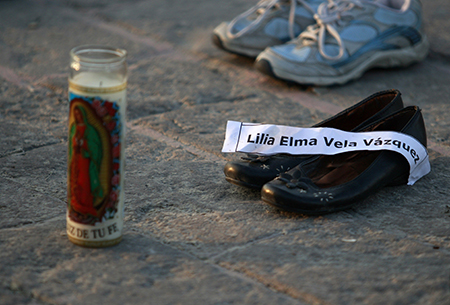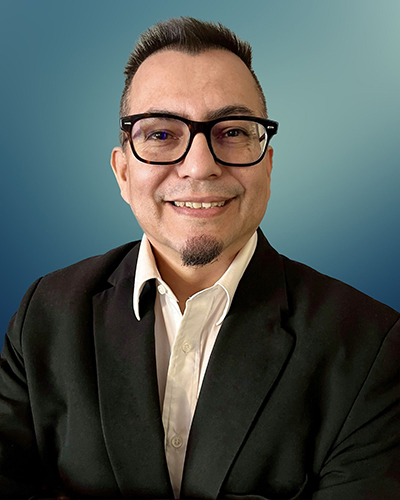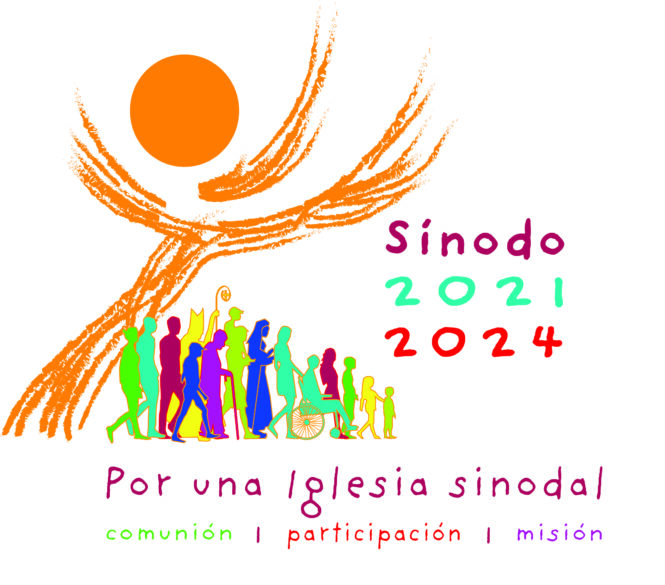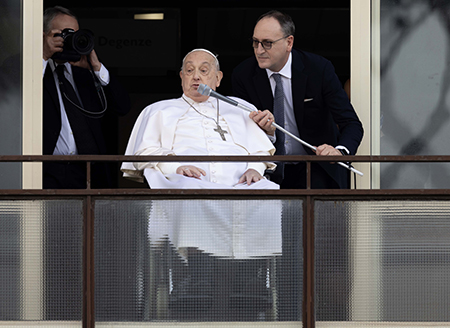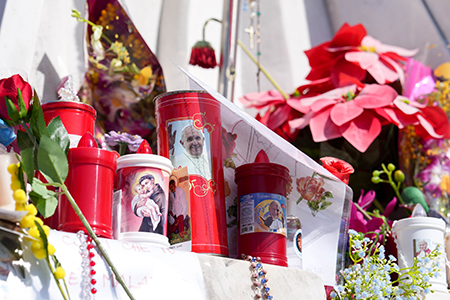Caminando con los Migrantes
Por Obispo Nicholas DiMarzio
En los más de 30 artículos que he escrito en los últimos tres años, he hablado desde la perspectiva de una persona con un doctorado en trabajo social, centrado en el estudio de la migración. Mi tesis doctoral versaba sobre la investigación de la migración indocumentada vivida en los años setenta.
Hoy, sin embargo, hablo más como teólogo moral centrado en la doctrina social católica, cuyo principio fundamental es la dignidad de la persona humana. Hace más de 30 años, los obispos católicos de Estados Unidos publicaron una sucinta descripción de la doctrina social católica sobre la migración. En primer lugar, toda nación tiene derecho a defender sus fronteras. En segundo lugar, al mismo tiempo, toda nación tiene la obligación de acoger a los emigrantes cuando sea necesario para promover el bien común internacional.
Aunque pueda parecer difícil, una nación debe comprometerse con los principios morales para ayudar a definir sus políticas sociales, ya que los principios morales han ayudado a determinar cómo, como seres humanos, nos relacionamos unos con otros.
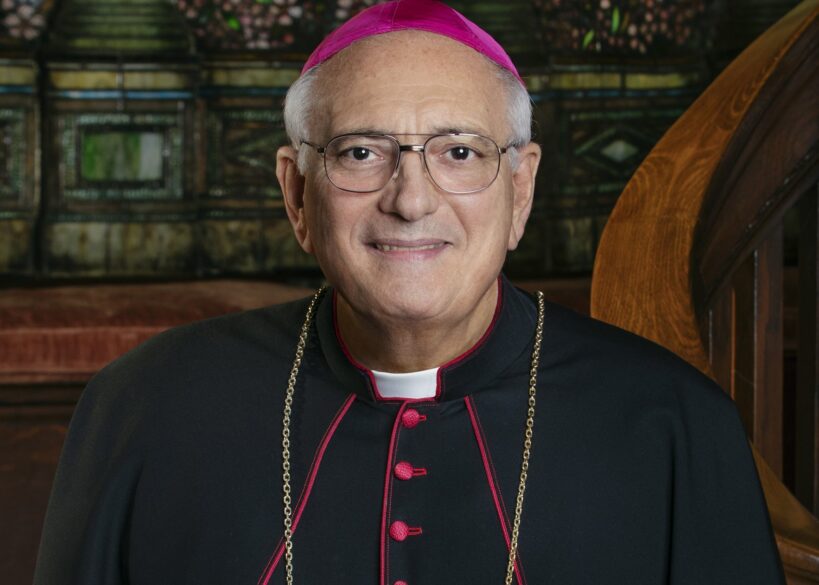
Con más de 50 años de experiencia, primero como párroco, luego como trabajador social en Caridades Católicas de la Arquidiócesis de Newark, seguido de seis años en la Conferencia Episcopal de Estados Unidos como director del Programa de Migración y Refugiados, y fundador de la Red Legal Católica de Inmigración (Catholic Legal Immigration Network, Inc., o CLINIC), la mayor organización de apoyo legal del país, he sido testigo directo de la importancia de tales consideraciones éticas.
Ahora, después de 27 años como obispo, puedo decir que nunca he visto una experiencia tan deplorable e innecesaria de sufrimiento humano que haya sido causada por un sistema político disfuncional.
Las deportaciones masivas son innecesarias. Por supuesto, los criminales convictos que son una amenaza para nuestras comunidades deben ser deportados, pero no sin el debido proceso. Sin embargo, debe respetarse la dignidad de todo ser humano, especialmente la dignidad del trabajador. Nuestra nación no está libre de culpa porque hemos utilizado mano de obra indocumentada para cubrir las brechas de nuestro mercado laboral durante al menos los últimos 50 años.
Los trabajadores indocumentados trabajan en la construcción, en el sector servicios, en la agricultura y en casi todos los demás ámbitos donde los trabajadores estadounidenses no quieren ese trabajo, aunque estén disponibles. En ocasiones, estos trabajadores son explotados. Aunque pagan impuestos y contribuyen al sistema de la Seguridad Social, no pueden optar a la Seguridad Social ni a muchos programas federales de servicio sociales.
Sin duda, es una llamada a la conciencia de nuestra nación que debemos plantearnos el reto de ver cómo tratamos a los extranjeros que hay entre nosotros, como nos recuerda el Antiguo Testamento. Se han hecho varios esfuerzos para rectificar la situación, como la Ley de Reforma y Control de la Inmigración, el programa de legalización de 1986. Sin embargo, como esa legislación no era integral, no hizo más que facilitar la continua migración indocumentada. La misma beneficia a algunos sectores del mercado laboral y a las empresas, pero perjudica a los migrantes, que trabajan en condiciones inferiores a las normales por salarios por debajo del mercado.
El actual estancamiento político nos ha llevado a un punto en el que somos incapaces de negociar eficazmente las cuestiones relacionadas con la historia de la inmigración en Estados Unidos. Es lo peor que puede pasar, casi tan malo como el freno racista a la inmigración de 1924, que ha sido aclamado como la pausa necesaria para evitar que lleguen al país inmigrantes indeseables.
Afortunados fueron aquellos cuyos antepasados llegaron antes de esa fecha, como los míos. Antes de 1924, casi todos los inmigrantes sanos y capaces podían inmigrar a Estados Unidos si tenían un pariente o un amigo como patrocinador, que garantizara que no se convertirían en una carga pública.
El fin no está a la vista. Lo que hizo grande a Estados Unidos fue la inmigración y, sin ella, puede que nunca volvamos a alcanzar la grandeza.
Hay otras soluciones a los problemas inherentes que causa la migración. Sin duda, nuestra inteligencia y recursos como nación podrían resolver casi todos ellos. Los constantes gestos humanitarios de nuestra nación nos han hecho grandes: cuando acogimos refugiados, cuando aceptamos solicitantes de asilo y cuando concedimos el estatuto de protección temporal a personas que huían de la persecución y condiciones adversas en sus países de origen.
Todos estos gestos humanos nos han dado la grandeza que podemos llamar nuestra. Grandeza no es sinónimo de riqueza. El liderazgo moral entre las naciones crea la verdadera grandeza.
La obispa anglicana Mariann Edgar Budde demostró recientemente valor moral al enfrentarse al presidente Trump con la verdad justo después del día de la toma de posesión. Nuestro Santo Padre, el Papa Francisco, en una carta a los obispos estadounidenses, elogia los esfuerzos de muchos obispos y otros para enfrentar esta crisis. El comentario más profético de su carta fue: “Lo que se construye a base de fuerza, y no a partir de la verdad sobre la igual dignidad de todo ser humano, mal comienza y mal terminará”.
“La Fortaleza América” no es un país encaminado a la grandeza si pierde su conciencia moral. Ninguna nación puede sobrevivir y merecer un lugar entre la familia de naciones si no respeta la dignidad humana básica. Esperemos que demos marcha atrás y aprendamos esta lección antes de que sea demasiado tarde.
(El obispo Nicholas DiMarzio es obispo jubilado de la Diócesis de Brooklyn, Nueva York. Escribe la columna “Walking with migrants” (“Caminando con los Migrantes”) para The Tablet y OSV News.)

